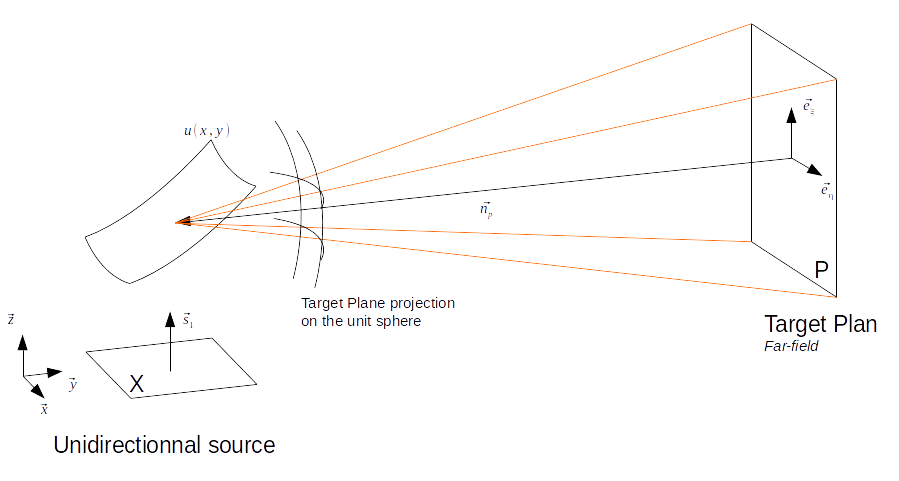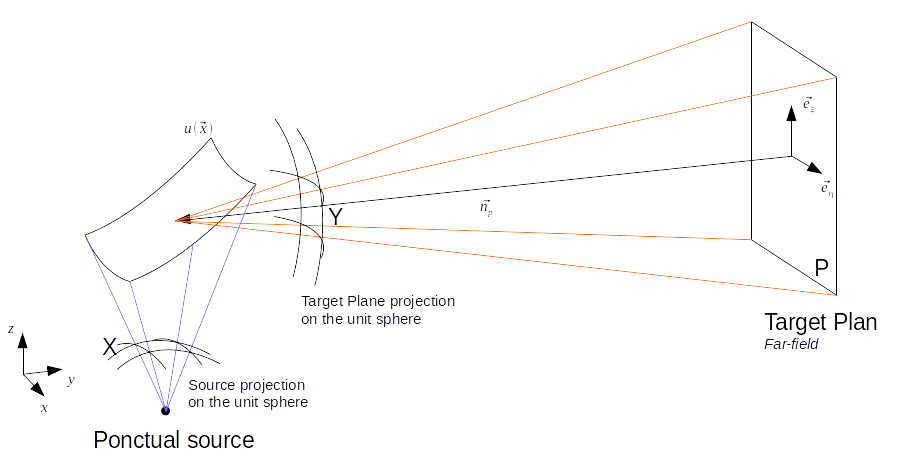Our mathematical tools allow to solve two different configurations of the reflector inverse problem (PIR) presented below:
-
PIR0
This first case has a unidirectionnal source of light and a target at a large distance (far-field) from the reflector, meaning that the reflector is considered as a point by the target. To solve this problem, the user prescribes the source and target density, their dimensions, and the geometrical configuration of the target plan (local basis and distance from the reflector).
- Problem Configuration
- Inputs/outputs
As the target plan is located in the far-field the far field, each sample coordinates on the target plan can be linked to a value of the reflector gradient. This leads us to what we call the reflector equation, which is of the Monge-Ampere type and which solution describes exactly the shape of the reflector. More information about how to establish this equation in 1D is available here.
Both source and target densities can be contained in rasterized picture file formats (.png, .jpg, …), matlab files (.mat), or simple text files, all containing position and weight of the marginals samples.
The reflector shape can be exported in two 3D file formats: .off and .ply. These formats allow the user to simulate the reflector with the 3D modeling and rendering softwares such as Blender.
-
PIR1
This second case has a point source of light and a target at a large distance, like for PIR0.
- Problem Configuration
- Inputs/outputs
Once again, the far field condition enables us to see target plan density as a reflected rays density defined on the unit sphere centered on the reflector. The problem then appears as an optimal transportation problem on the unit sphere (see Wang article).
For the time being the source has to be uniform, but the user can still define its opening angle. The target plan geometry and density are defined the same way as for PIR0 as well as the exportation of the results in 3D model files.
You can find more information about our software structure here.



